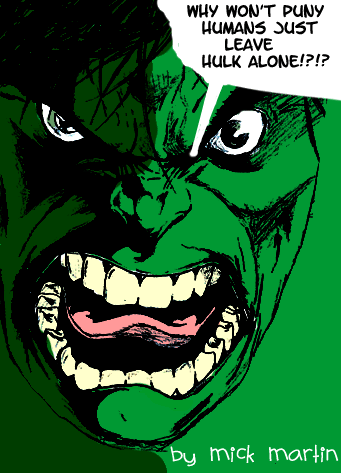
My first review for the previous incarnation of Comic Book Galaxy covered Incredible Hulk #33, one of Marvel's 2001 "Monster-sized" issues. It featured, among other things, a fill-in story by Christopher Priest that bookended the writing chores of Paul Jenkins and Bruce Jones on the title. What made the story such a treasure, and much more memorable than any other Hulk story of recent years (particularly of any other fill-in, and there have been quite a few since the title's 1999 reboot), is that it was simply a Hulk story. Priest didn't give us an updated Hulk origin. No new psychological motivations were attached to the relationship between Bruce Banner and his monstrous alter-ego. His speech pattern didn't change, his skin color stayed the same, and he didn't eat any nurses. It was just a good, funny, touching story about a big green guy who breaks stuff; something Hulk readers have been denied for quite a long while.
Now, you're probably thinking I'm the kind of obsessed RPG-minded reader who frequents comic book battle message boards, and pins death threats to the windshield of Kurt Busiek's car for letting Superman clock Thor upside the head in JLA/Avengers. Hulk fans are considered one of the most obsessed and hard-nosed groups of comic book fandom. In fact, Priest jokingly expressed some concern about Hulk fans' reaction to the aforementioned fill-in writing, "Hulk fans are very serious about being Hulk fans. Good thing I just moved..." Many of those readers who have enjoyed Bruce Jones's Hulk stories likewise dismiss the anti-Jones sect's criticisms as coming from stubborn, narrow minded Hulk-nuts who resist any new ideas; any change.
You might get away with calling Hulk fans obsessive or immature without hearing any objections from me, but the idea that Hulk fans can't handle change is a pretty laughable notion. For over twenty years, all Hulk fans have gotten is change.
Since Bill Mantlo's '80s Hulk stories, we've had smart Hulks, gray Hulks, mute Hulks, evil Hulks, suicidal Hulks, psychotic Hulks, incestuous Hulks, Hulks borne of Skrulls, Hulks that don't even have to turn into the Hulk to get all Hulky, and Sybil-Hulks who change from green-to-gray and smart-to-dumb every day. We've even had a Rick Jones Hulk (who unfortunately lacked the hilarious Beatnik/Hulk lingo of one of the early What If…? issues). Imagine if Mexican wrestlers broke Bruce Wayne's back every few years, and Spidey endured clone sagas bi-annually. That's what Hulk fans have dealt with for the past two decades.
I'm not heralding the return of any particular incarnation of the green-sometimes-gray goliath, or of any particular writer. Change is inevitable. Continuity gets muddled. That isn't the point, and that's not my complaint.
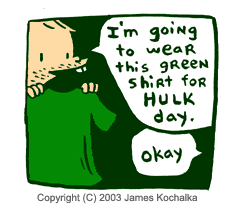 There seems to be an -- understandable, if not necessarily accurate -- impression in the House of Ideas that you just cannot write a compelling story about a big green guy who breaks stuff. But, he's one of their household names, so canceling the title isn't an option. The result is that any writer hoping to scribe the character needs a very specific gimmick. They need to re-write his origin. They need to change his speech pattern and his skin color. They need to make him eat nurses and slaughter half of Manhattan. They need to drag him through a four-years-long conspiracy thriller that reads like old people sex.
There seems to be an -- understandable, if not necessarily accurate -- impression in the House of Ideas that you just cannot write a compelling story about a big green guy who breaks stuff. But, he's one of their household names, so canceling the title isn't an option. The result is that any writer hoping to scribe the character needs a very specific gimmick. They need to re-write his origin. They need to change his speech pattern and his skin color. They need to make him eat nurses and slaughter half of Manhattan. They need to drag him through a four-years-long conspiracy thriller that reads like old people sex.So, while the various changes in characterization and continuity in other titles come about to help fuel the story, in the case of Incredible Hulk, the change is there just for the sake of change; just to alter the face of the character and disguise it as depth. A Hulk story simply won't be published unless it re-invents him somehow. Other writers change the status-quo for the sake of story, while the success or failure of Hulk stories hinge solely on that change. Everything revolves around it. The question of whether or not the story is actually good, regardless of the change, is never asked.
Can good, interesting stories about a big green guy who breaks stuff be written? And more importantly, can they sell? I don't know. Priest did a fine job, but to be fair, it was just a fill-in, and the story might not have worked for anyone who hadn't read the preceding Black Panther stories.
I guess my problem with the ongoing mess that is Incredible Hulk really speaks to the broader argument of whether any of these decades-old characters have good stories left to be told in their various sagas, or if they've ceased to be characters at all, and instead are cold, soulless franchises.
I'm not sold yet on the idea that the tales of our various childhood icons should end, probably because there are still good stories being told, as rare as they may be. Matt Wagner's Batman/Superman/Wonder Woman: Trinity is the perfect example of the kind of Hulk stories I crave: good, compelling stories casting age-old characters in an interesting light without altering the essentials of who they are at every turn. Wagner did it. Priest did it.
It's been a long time since I've been happy with my childhood hero's title, and as such choose to consider Incredible Hulk #467, Peter David's last story on the title--and probably his best--as the very last Hulk story (which worked much better as a climax to the Hulk's history than David's brief return to the character in Incredible Hulk: The End--once again, the character was re-invented; this time as a superhero parallel of Greek myth). With the departure of Bruce Jones from Marvel and the rumors that the green guy's saga will be brought closer to that of Avengers, maybe Marvel will get the kind of talent that can give Hulk-nuts like me interesting, entertaining stories about a big green guy who breaks stuff. Probably not. Until they do, I'll make allies of the nay-sayers who call for an end to the superhero necrophilia and ask that finally, and at long last, somebody will leave Hulk alone.

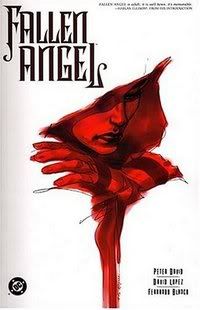 Fallen Angel
Fallen Angel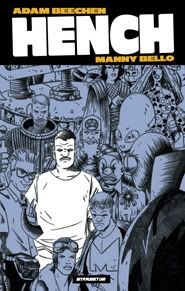 Hench
Hench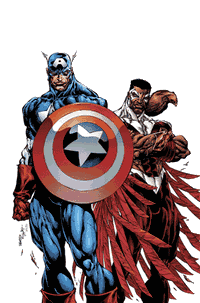 Captain America and The Falcon #s 1-3
Captain America and The Falcon #s 1-3 Empire
Empire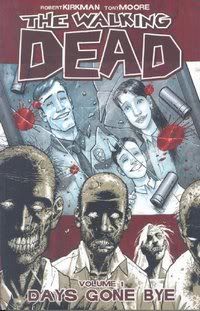 The Walking Dead, Vol. 1: Days Gone Bye
The Walking Dead, Vol. 1: Days Gone Bye